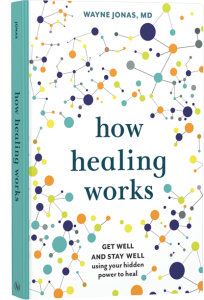It takes a village to manage chronic pain – or at least a multidisciplinary team of healthcare professionals with you (and your own self-care) at its center. With a pain management team by your side, it is important to keep these four actions in mind about managing your chronic pain:
1. Communicating with Your Doctor
In this day of 15 or 20-minute office visits, many physicians find themselves rushing from exam room to exam room without time to even take a breath. This can make it difficult to spend the time required to manage chronic pain. Here are some strategies to make it easier on both of you.
- Write down your concerns before your visit.
- Stay focused on one thing that’s bothering you. Is it that you can’t sleep because of the pain? Can’t you play with your children? Are you missing work? Tell your doctor what matters to you in addition to what’s the matter.
- Describe the pain precisely. Saying “it hurts” doesn’t help. Many clinicians use a 1-10 pain scale, with 10 being the worst pain you’ve ever felt and one being no pain. A more helpful way to describe your pain is to put it into perspective in terms of your normal life. For instance, “I used to be able to walk up and down six flights of stairs with no problem; now I have to take the elevator.”
- Track your pain. For a week before your visit, keep a pain diary in which you rate your pain every couple of hours on a scale of 1 to 10 and what you were doing. Also, track all pain medications you take. Write down any non-medical approaches you use to cope with your pain.
- Take advantage of your pharmacist if you have medication-related questions. They are knowledgeable about medications, how well they work, and side effects.
- Be honest with your health care provider in terms of alcohol and drug use, diet, exercise, and other providers you’ve seen.
- Bring a friend or family member to your appointment who can take notes. If you are in pain and/ or nervous, you may forget things.
2. Knowing Your Rights and Responsibilities as a Person With Pain
As someone with pain, you have certain rights and responsibilities when interacting with the healthcare system.
You have the right to:
- Have your pain taken seriously.
- Be treated with respect.
- Have your pain evaluated holistically, based on its impact on your life, not just on the injury or medical condition.
- Understand why you have pain.
- Receive education about your pain and treatments.
- Be included in any treatment decisions.
- Refuse any treatment (i.e., opioids, additional and/or repeated tests, procedures and surgeries).
- Receive evidence-based care. For instance, there is no evidence that bed rest helps with back pain; in fact, it’s one of the worst things you can do for it.
But you are also responsible for:
- Treating your healthcare team with respect.
- Communicating your goals and values as they relate to the pain. For instance, it might be most important that you return to playing tennis, even if you have some residual pain.
- Following the treatment plan you and your healthcare provider agree upon, including your self-management regiments.
- Telling your health care practitioner when something isn’t working or if you’re having side effects.
- Knowing what your insurance covers, which providers are in network, and if you need pre-authorizations for treatment.
- Having realistic expectations. For instance, you may never find a “cure” for your pain. Instead, you can shift your perspective and work with healthcare professionals to learn how to manage your pain.
3. Making the Most of Your Insurance Coverage
Here are a few things you can do if your health insurance company denies your claim or requires that you first use opioids to treat your pain:
- Know your benefits. Before you make an appointment for a treatment, check to see if your insurance covers it.
- Obtain all necessary pre-authorizations before undergoing any procedures.
- Appeal the decision and get your doctor to write a note. If it’s denied, appeal again. There are often several levels of appeals.
- Talk to someone in your company’s human resources; they may be able to overrule any insurance decision in large companies that are self-insured – meaning they pay claims directly.
Check to see if you have a health savings account or flexible savings account, which allow you to use pre-tax dollars to pay for non-covered health care costs.
4. Connecting With Others Living With Chronic Paim
Look for organizations that support people living with pain and/or people with your particular pain condition. Networking with others who have similar symptoms or access the same health care services has many benefits.
- Networking with people who live with similar symptoms lets you know you are not alone.
- Hearing the variety of tools used by other people with pain may give you some ideas of other options to discuss with your healthcare team.
- Learning about research pertinent to your symptoms or condition.
- Accessing references and resources on your own schedule.
Chronic pain is a complicated, challenging medical condition. Managing your pain while navigating the health system can feel overwhelming. But you can lessen the strain by working with the right providers, knowing your rights, and making the most of your health care coverage.
 Take Your Health Into Your Own Hands
Take Your Health Into Your Own Hands
Drawing on 40 years of research and patient care, Dr. Wayne Jonas explains how 80 percent of healing occurs organically and how to activate the healing process.


